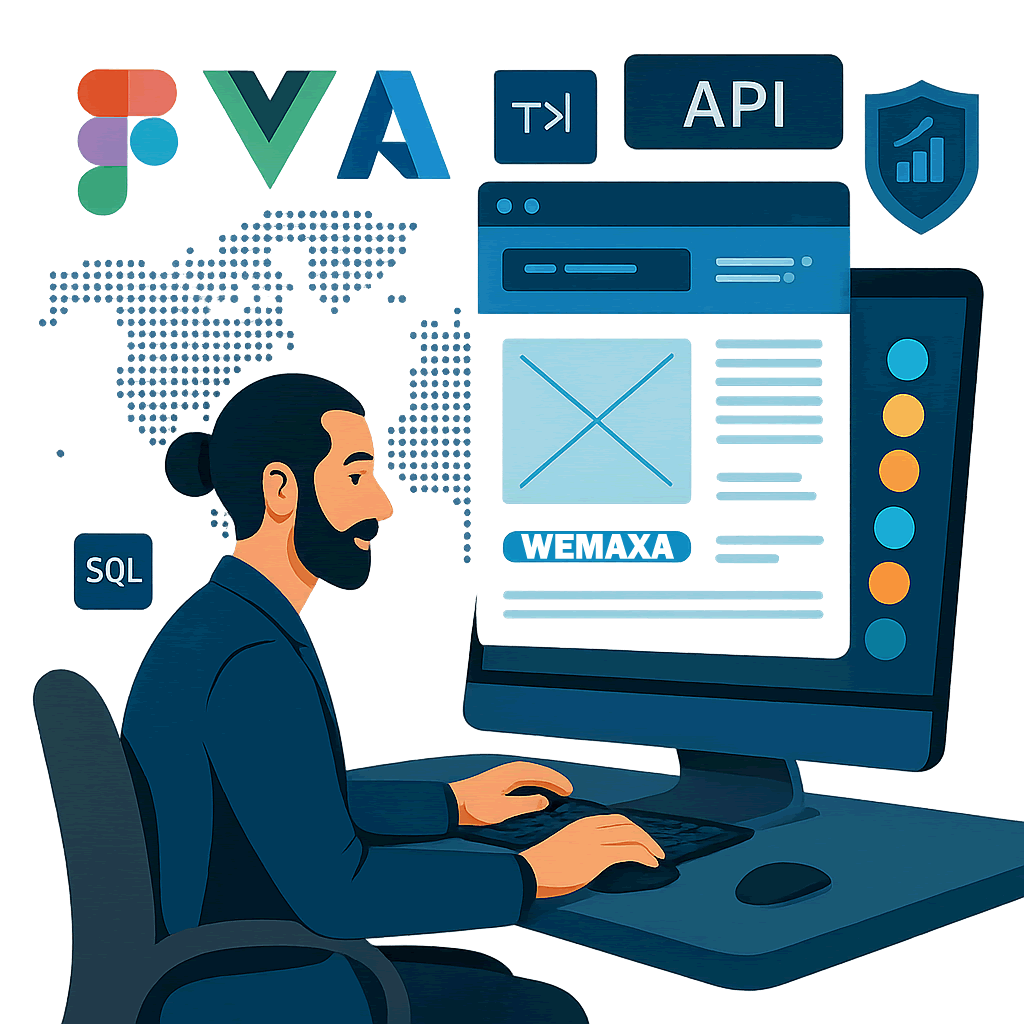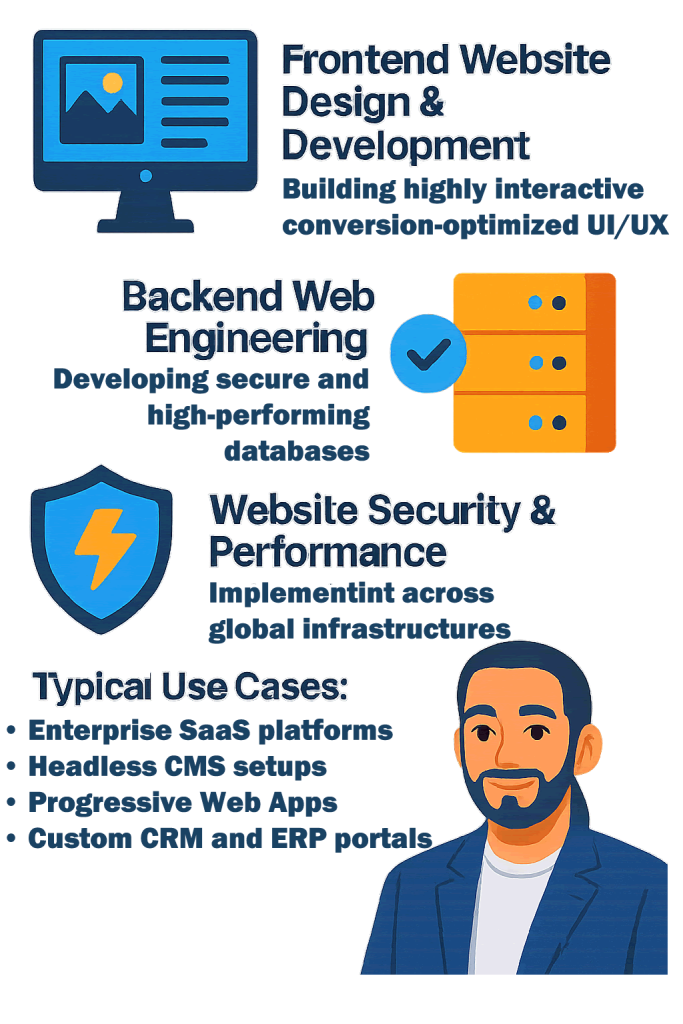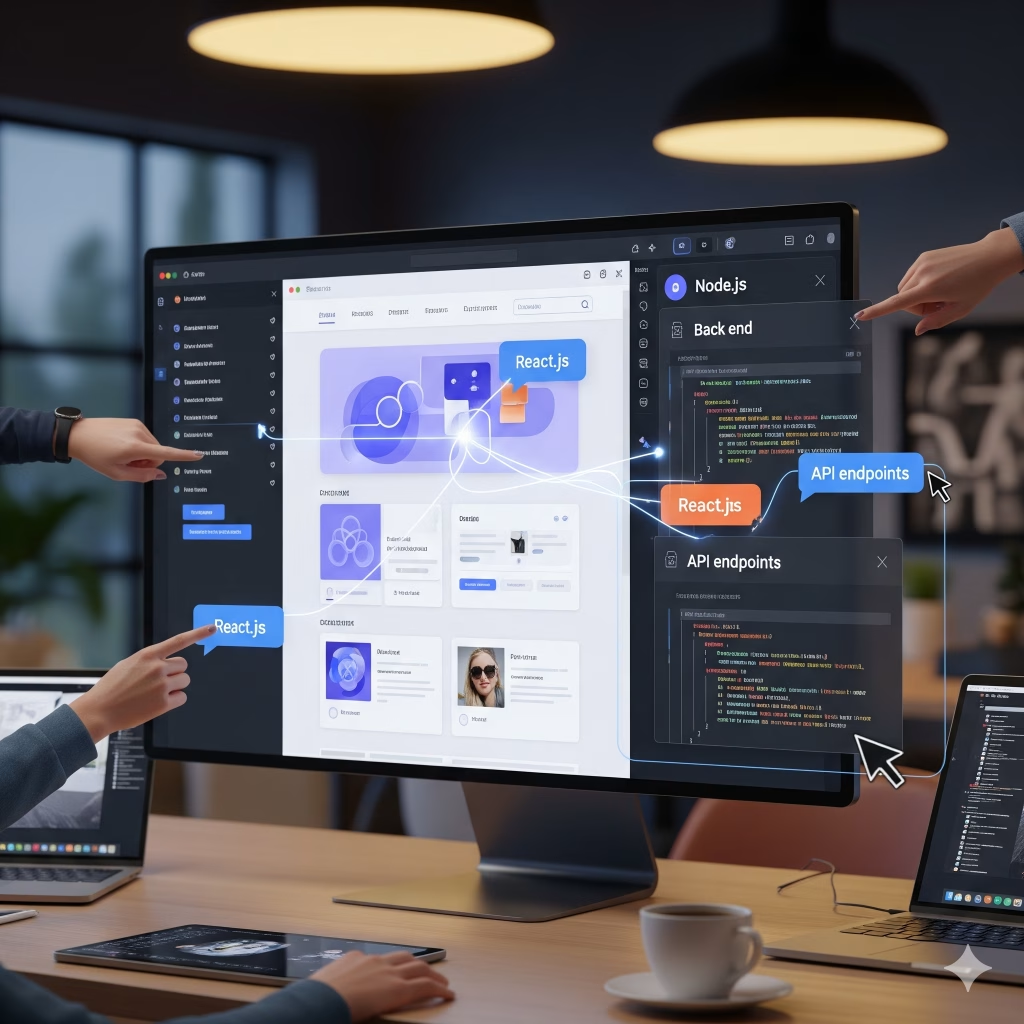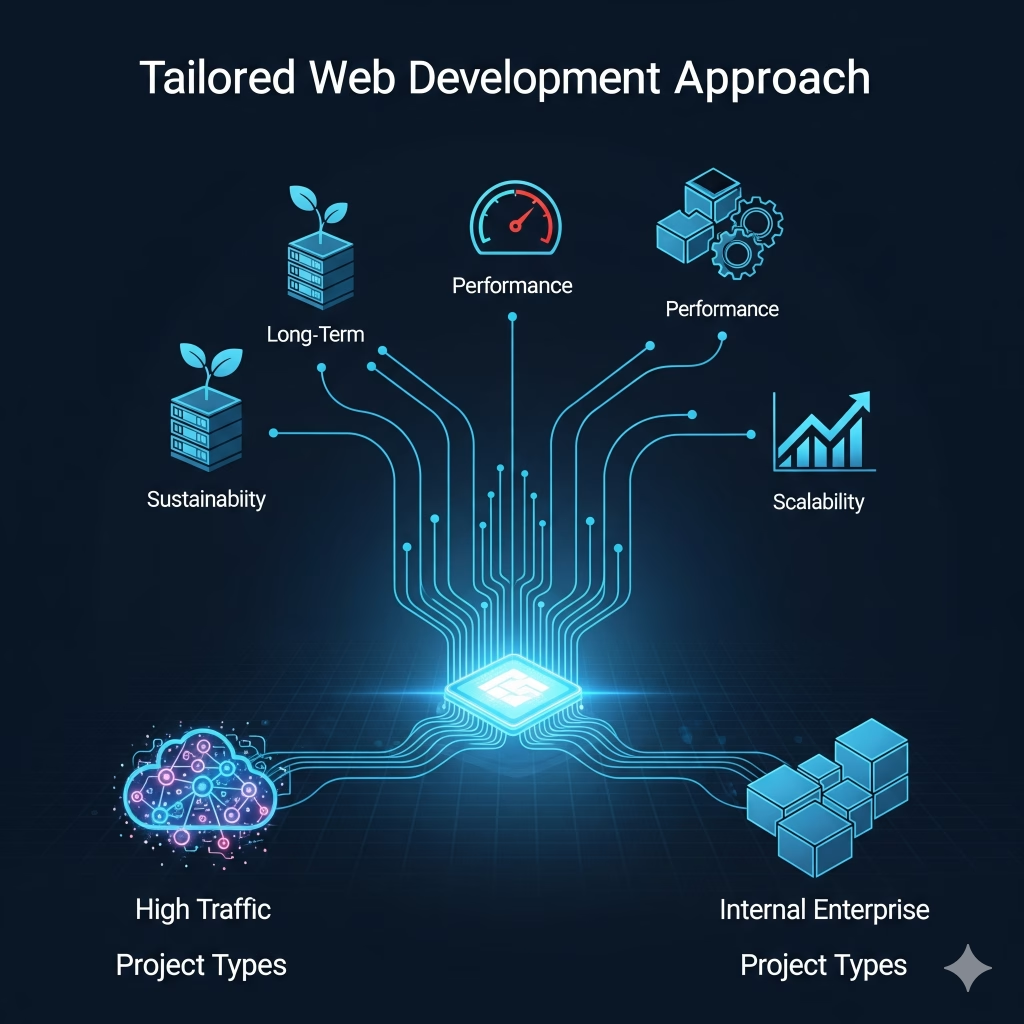
Every modern website begins with a great interface. Our design process starts with collaborative prototyping using tools like Figma, Framer, or Adobe XD. We involve our clients from the earliest stages to capture their brand personality, audience needs, and visual identity. Each interface is carefully crafted to be intuitive, user centered, and geared toward maximizing engagement and conversions. We implement modular, component-based frontends using technologies like React.js, Vue.js, and Angular. These allow for seamless responsiveness across all devices, faster updates, and scalable design systems that evolve with your platform over time. While the user sees the design, performance is powered by clean and scalable backends. We develop backend services using proven frameworks such as Node.js, Express, NestJS, and Django. Each application is structured to be robust, maintainable, and secure. For data handling, we choose high-performance databases like PostgreSQL, MySQL, and Firebase Firestore, depending on the needs of the project.
Businesses gain from full stack design because it eliminates the recurring cycle of blame between designers and developers. The process becomes less about silos and more about delivering an outcome that works under realistic conditions. Instead of debating whether the problem is visual or technical, the full stack mindset sees the site as one continuous system with no excuses allowed. Ultimately full stack website design is about accountability. It forces the creator to think like both a user and an engineer, to balance beauty with durability. In a market where competition is always one click away, this blend is not a luxury but a baseline requirement. Sites that fail on either side lose relevance quickly, while those that deliver a unified experience define the standard others must follow.

APIs are designed with clarity and stability in mind, using REST or GraphQL to ensure smooth communication between services and frontends. Performance and security are inseparable from the success of any website. We implement secure authentication systems using token based access control such as OAuth2 and JWT, ensuring each user session is authenticated with precision. Role based permission layers are implemented to define exactly who can do what across your digital infrastructure. To keep sites fast regardless of location, we use a combination of load balancing, advanced caching strategies, and global CDNs. This delivers content quickly to users across different regions and improves overall reliability and uptime.
Typical Use Cases
- Enterprise level SaaS platforms
- Headless CMS powered websites
- Progressive Web Applications
- Custom CRM and ERP systems
Full stack website design is not just a fashionable phrase but a demand born out of necessity in a digital economy that punishes half-finished solutions. When a business invests in a web presence, the split between front end aesthetics and back end functionality cannot be treated as two separate worlds. A site that looks beautiful yet breaks under pressure is just as useless as a perfectly coded backend hidden behind a design that feels outdated.

Full stack design attempts to end this artificial division by taking responsibility for the entire experience. On the surface, the front end dictates how the user perceives the brand. Layout, typography, and responsiveness are not cosmetic touches, they determine whether someone stays or leaves in seconds. Every element the visitor interacts with is shaped here. Yet beneath this thin layer lives the infrastructure that decides speed, scalability, and data security. Ignoring one for the other is no longer acceptable because the modern user notices both immediately.

Back end development covers the server logic, databases, and integration with third party systems that give the site actual utility. Payment processing, account management, content handling, and analytics pipelines all fall under this category. The back end defines the skeleton while the front end defines the skin. Full stack design is the recognition that both must be built in coordination rather than patched together later. A competent full stack designer does not need to reinvent every part but must understand enough of each layer to keep the final product coherent. They may not write every single database query or CSS line, but they are aware of how the decisions at one level influence the other. This awareness avoids the common disaster where a design mockup demands functionality the backend cannot support or where backend complexity is buried behind an interface too clumsy for real users.

Each project is tailored to meet specific business goals while being flexible enough to adapt and grow. Whether you are building a high traffic platform or internal enterprise software, we focus on long term sustainability and performance.


